Charley Henley began his career in VFX at Mill Film, including working on GLADIATOR. He then joined MPC and worked on numerous projects including LARA CROFT: TOMB RAIDER, 3 HARRY POTTER, 2 NARNIA but also ALIEN VS. PREDATOR, X-MEN: THE LAST STAND or DORIAN GRAY.
What is your background?
I started in the industry working as a runner, projectionist, video assist and assistant editor for Merchant Ivory Productions. They gave me the opportunity to learn all about the film trade and experience the multitude of jobs and skills that combine to make a feature film. I continued following a career aimed at Editing and post production and soon found my true home was in Visual Effects. A job that started as Technical Assistant with Mill Film in London gave me my foundation in VFX, I worked as a Roto/Paint artist and Assistant to DMP where I was charged with building 3D elements to be used in Matte Paintings and Environments. Following that, 12 years at MPC has taken me from Junior Compositor to VFX Supervisor.
How did MPC got involved on this show?
MPC has worked on a few shows with Ridley Scott including KINGDOM OF HEAVEN and more recently ROBIN HOOD (which Richard Stammers was VFX supervisor for), so we have built great relationship with him. Ridley asked Richard to be the Overall VFX Supervisor on PROMETHEUS and MPC were brought on board as lead facility delivering more than 400 shots.
How was the collaboration with director Ridley Scott?
Ridley collaborated very closely with MPC right from the early Preproduction stages to delivery. During preproduction Ridley would come into MPC and work with us on Previs. He would sketch a shot on paper and we would then go and animate it into 3d and then review that in Maya and tweek the layout and animation. During production there was also a great deal of on-set collaboration at various locations including Jordan and Iceland, and during post production Ridley would regularly come to MPC’s offices in London to review work.
What was his approach about visual effects?
Ridley has such a strong visual style and amazing sense of composition and lighting, it’s a real pleasure to work with him on the Visual Effects. I think he really enjoyed the creative tool of visual effects and being able to design and light shots in post, although he would always like to shoot something practical when on set.
How did you collaborate with Production VFX Supervisor Richard Stammers?
I have worked with Richard for many years. We talked through the work a lot in preproduction and worked very closely together on set. In Post we had Cinesync sessions while he was in LA. With Cinesync you can look at a shot at the same time in LA and London and draw on it and review shots together.
What have you done on this movie?
MPC had the largest award of over 430 shots, including all of the shots in space, the digital planetary environments, the Prometheus Human Spaceship, the Engineer’s Spaceship and the sequence where the ships crash and roll on the planet environment and the Hammerpede creature that attacks Milburn and Fifield.
Can you explain the creation of the space environments?
This involved 2 planets viewed from space, the Gas giant and LV-223, the moon Prometheus lands on. The gas giant was based on a real small moon called Enceladas off Saturn that the Cassini space probe had photographed. Ridley liked the texture of it so the challenge was then to create a huge gas giant that encompassed the essence of this small ice moon. We looked at textures of Saturn and Jupiter for inspiration and then photographed swirls of ink to simulate giant gas flow dynamics which we combined with satellite images of earth in a big DMP. LV-223 and its atmosphere was also matte painted. The brief was that the planet should have terrible weather so we based it on hurricanes on earth seen from space and added lightening flashes in compositing.
Can you tell us in detail the creation of the Prometheus?
Building the Prometheus was one of our greatest challenges. It started with some very good concept drawing that Ridley’s team had developed. We matched these to get the basic model and then approached texturing the surface using photographed panels from real aircraft, using textures of dirt and tiles on buildings to help with scale. Arthur Max the production designer had built a practical foot of the Prometheus about 30 ft high. We photographed and scanned it, modeled to the scan and textured it with photo projections. As this had come from the set we used it as our reference for detail and realism for the rest of the ship. There was such a huge area of intricate design it was very challenging to keep all the details we had to keep harmony with the original concept.
We analysed the previs and postvis shots to find key angles and made sure we didn’t overwork areas that weren’t to be seen. But there is really only one blind spot where the detail is less. Lead Modeler Lisa Gonzalez and our texture artists worked together to find a fine balance between modeling and displacement to make sure we could be efficient in lighting and rendering particularly as we were keen to push IBL and ray traced lighting and not bake in any shadows or occlusion.
Working from the concept art and referencing the set designs, MPC vfx supervisor Matt Middleton kept a close eye on the extra details that we modeled in to make sure we were always sympathetic to the style set by the art work and set constructions.
There was a huge amount of design work needed to get to a finished level on any surface of the Prometheus, something that was hard to estimate and meant a lot of hard work for our model and texture teams lead by Lisa and Caroline Delen. We used references from all sorts of sources, from Arthur Max’s sets to NASA space craft and from the classic Nostromo model from the original ALIEN to modern buildings.
How did you create the beautiful planet environment when the Prometheus arrived and landed?
The key to this was to find real locations on earth and use as much real projected photography as possible but combined in a way that looked unearthly.
Ridley found a photo of a valley in Wadi Rum in Jordan, he drew some strange alien domes and markings on the landscape and that was our initial guide. We found that very valley in Jordan and went on location there. We shot references and plates from an eclipse camera rig mounted on the side on an old Huey helicopter. On the ground, using a guide, we found the ideal location for the ship to land and camped out there taking high dynamic range 360deg images from the same spot at various times of day. From these we than had a library for the back drop mountains that could be used to match any lighting direction we had in the plates that were to be shot at a later date in Iceland. A number of foreground green screen plates where also shot at Pinewood and we used our digital environment to extend these.
What references and indications did you received from Ridley Scott for those environments and the space?
Ridley had developed some great references with his concept artists for the planet surface based on photos from a recce he had done in Morocco. He also found photos of the Saturn moon called Enceladus taken by the Cassini space probe. This was to be the basis of the flowlines and shapes seen in the Gas giant the Prometheus flys by.
Can you tell us more about the clouds creation?
We had a Helicopter with stereo rig on an Eclipse camera mount and we shot lots of cloud plates in some beautiful skies whilst on location in Iceland. These were manipulated and enhanced with DMP projections for the background and some sprite based CG Speed FX were used to enhance the feeling of travel closer to camera.
Can you tell us more about the shooting locations?
The Prometheus bridge was built on a stage at Pinewood studios with a greenscreen backdrop, the whole Prometheus airlock and one landing foot where built on the Pinewood backlot surrounded by a huge 60ft high circular greenscreen backed by shipping containers.
Main unit also shot on location in Iceland for all the exterior scenes and a smaller VFX aerial unit filmed the Wadi Rum Valley in Jordan. Almost all exterior shots where digitally enhanced by combining fields of CG pinnacles created form real rocks found in Iceland with a mountain backdrop from Wadi Rum.
How did you manage the difficult aspect of the greenscreen composites with the cockpit and transparent helmets?
The cockpit set didn’t have any glass which meant a 3D dirt and reflection render for each shot but enabled us to have a very clean greenscreen.
Compositing good edges on the helmets involved a lot of roto, prepping out of unwanted reflections and a great tool one of mpc’s compositors set up in Nuke was used for diffracting backgrounds through the glass. On some shots the helmet reflections were so bad on set that it required the removal of the front portion of the helmet, which was then replaced with a CG version with dirt, reflections and refraction.
The movie features many creatures and amongst them the Hammerpede. Can you explain its creation and rigging?
The Hammerpede was a collaboration between practical creature FX and VFX. Neal Scanlan created a great animatronic Hammerpede that had a lot of control but was somewhat limited for extreme animations. The challenge was to seamlessly intercut between animatronic and CG. From Ridley’s story boards a careful plan was hatched as to which shots would be CG and which could be practical. On the day, Ridley pushed Neal and us to do a practical version of each shot. This turned out well for editing and was a great guide for us. We took over shots where the head opens up, the hammerpede wraps around and breaks Milburns arm, the head regrowing and the internal helmet shots.
The rig was based on a snake skeleton we had built for some other shows but it needed to be extendable and have specific muscle controls across the body. While inside the helmet we had to squash the creature against the glass and also added a slime trail based on the animation.
What were the main challenges with this creature?
The internal helmet shots required very accurate match move and roto animation. Shooting with stereo cameras is very unforgiving in these situations because the other eye picks up the smallest error. It makes you realize how much you get away with on a mono show.
The other big challenge was the need to perfectly match the look of the animatronic. The creature was built to mimic the translucent surface of the practical. We brought the animatronic into the office and broke down how it was built. There was an inner sculpted muscle layer covered with a silicon translucent skin. We copied this 2 layer approach exactly in the 3d model and lit it simulating the scattering of light though various thicknesses of outer skin.
Can you tell us more about the infected face of Charlie?
As Charlie gets infected there is a progression of disease across his face. This was a digital make-up task, something we are doing more and more of. The actor was shot with 3 different states of make-up throughout the scene so there was already a progression established practically. Our job was to add animation to a number of shots. For the simpler shots we cleaned up the original makeup and then used animated mattes and warping in 2d to reveal the veins growing. The more complex needed full roto animation of Charlie’s head and blend shapes of 3d veins bulging and collapsing.
At a moment, there’s a huge sandstorm. Can you tell us more about it?
The task was to build a 4 kilometer wide giant sandstorm that races down the valley to be viewed from many angles and levels of detail. MPC FX Lead Nicola Danese referenced real sandstorms and blocked out the FX using 25-30 caches/slices generated using Scanline’s Flowline and MPC proprietary Volumetric tools to preview. Ultimately the real sandstorm reference was not violent or massive enough and there was a need to add more and more detail and play more with speed and turbulence. In the final shots the storm had escalated in complexity to 100 + separate caches, each with 136 million voxels, totaling about 13,600 Million Voxels. Rendered with PRman and enhanced with some sprite based dust passes and real elements in compositing.
Can you tell us in detail the creation of the Juggernaut?
The first time I saw the Juggernaut was when Ridley showed us the artwork created by Steve Messing and his concept team. It clearly related back to the derelict in the original ALIEN but looked even bigger and had a much higher level of detail. I knew it would be seen from every angle as well as in close-ups and wide shots in the movie, so this was always going to be a huge challenge to recreate digitally. A Russian artist called Alex Kozhanov, also known as Gutalin, was commissioned to take the concepts to the next level using Zbrush and we used his final renderings as our guide. The basic shape of the ship is fairly simple but the complexity lies in the details. To generate a renderable model we striped down the design and modeled the larger components, pipes, holes and recesses. We then tried a relatively procedural approach to laying out the smaller level piping and textures but this proved unsatisfactory. Ultimately the organic but precisely designed nature of the ships flowing lines, meant all details had to be layered out by hand under the watch of Matt Middleton. Careful balancing between what should be polygons and what should use displacement maps at render time was needed. A section of the Juggernaut was built practically by Production Designer Arthur Max’s team. This was the hole that Shaw lowers David out of and a piece that falls on Shaw after the crash. These gave us a template for MPC Texture Lead Caroline Delen to work from. We also referenced buildings, ships and submarines for scale and material qualities. The CG Juggernaut was wonderfully detailed and held up extremely well to close-up shots but we still did a Projected DMP pass on most of the close-up shots.
What was your felling to bring to life a so mythical spaceship?
Responsibility and wonder.
Have you created previz especially when the Juggernaut comes out the silo?
MPC didn’t for that scene but we did do Previs for the Juggernaut crash sequence. In preproduction Ridley would come in to MPC and storyboard shots for us. He would interactively work with us in Maya, setting up cameras and the layout of environments. After shooting we also followed up with Post Vis. Our Animation Supervisor, Ferran Domenech, quickly laid out the falling and rolling Juggernaut animation, debris falling and basic FX. We ran the whole sequence in this way and generated a very good looking post-vis pass. Combined with some temp music and sound effects we presented the whole scene to Ridley and Richard. This gave such confidence that the scene was working early on, that it allowed us to then focus on the quality of the final shots and and it also helped editorial to quickly refine the cut.
How have you created the crash between the two ships and then on the planet ground?
The crash started with earlier Pre-vis we had done with Ridley, which was cut in between the live action based plates that make up most of the scene. The impact shots were all full CG. We carefully plotted out how the Prometheus would break-up and be destroyed by impacting the Juggernaut. The option to shoot a Miniature was on the cards, but looking at previous work MPC had done using our proprietary destruction tools Kali gave us and Richard the confidence to go with a full digital approach. Once we had decided which part of the ship should be destroyed we then modeled only that part of the ship to be Kali compliant. The explosions where based on a fluid Simulation and then enhanced with elements from practical explosions.
How was the collaboration between the various vendors?
It was a pretty clean divide really as MPC were doing all of the environment work and ships, Weta who were doing a lot of the CG creature work and Fuel created the Holograms on the Prometheus Bridge.
What was the biggest challenge on this project and how did you achieve it?
I think the biggest challenge was the goal we set ourselves. We wanted to do everything we could not to interfere with or limit Ridley’s directing process and creative freedom and deliver the best quality VFX possible based on his vision. This meant we had to be flexible to change right up to the last minute. We built a pipeline to allow, if need be, animation or even model changes to update after we were signed off in lighting and compositing a shot. Everything was scalable. For example we would technically layout a shot correctly and then Ridley would ask for adjustments to the size of say the Dome and ship, just in that one shot if it gave a better composition or story point. So flexibility was key.
To help tackle this we decided to present the Layout and Animation stages to a much higher visual level. Traditionally these would be grey playblasts roughly matted over the BG plate. We pushed the texture, lighting, atmos and level of fx at this stage to be as presentable as possible. By investing this time on look early on, we actually got approvals faster and with more confidence. We found we could move on quicker into discussing lighting and finishing qualities. We also end up with fewer changes later down the pipeline.
Was there a shot or a sequence that prevented you from sleep?
The building of the 2 Space ships was very creative and labor intensive, as they were dependent on Concept approval and elements from the practical shoot we couldn’t start on them as soon as we would have liked. They were in the majority of our shots and so having them shot ready on time was critical. Let’s say pressure mounted as that time approached.
What do you keep from this experience?
The creative challenges as well as freedom given by Ridley and Richard made for a very special show. The team at MPC was so inspired by the project that everyone was working to the best of their game. Working with such a committed team on set and back at MPC in post was inspirational and a great pleasure.
How long have you worked on this film?
From September 2010 until April 2012
How many shots have you done?
430.
What was the size of your team?
Around 150.
What is your next project?
Just finishing up on TOTAL RECALL.
What are the four movies that gave you the passion for cinema?
CLOSE ENCOUNTER OF THE THIRD KIND;
Sergio Leone westerns especially ONCE UPON A TIME IN THE WEST;
STAR WARS and 2001.
A big thanks for your time.
// WANT TO KNOW MORE?
– MPC: Dedicated page about PROMETHEUS on MPC website.
© Vincent Frei – The Art of VFX – 2012


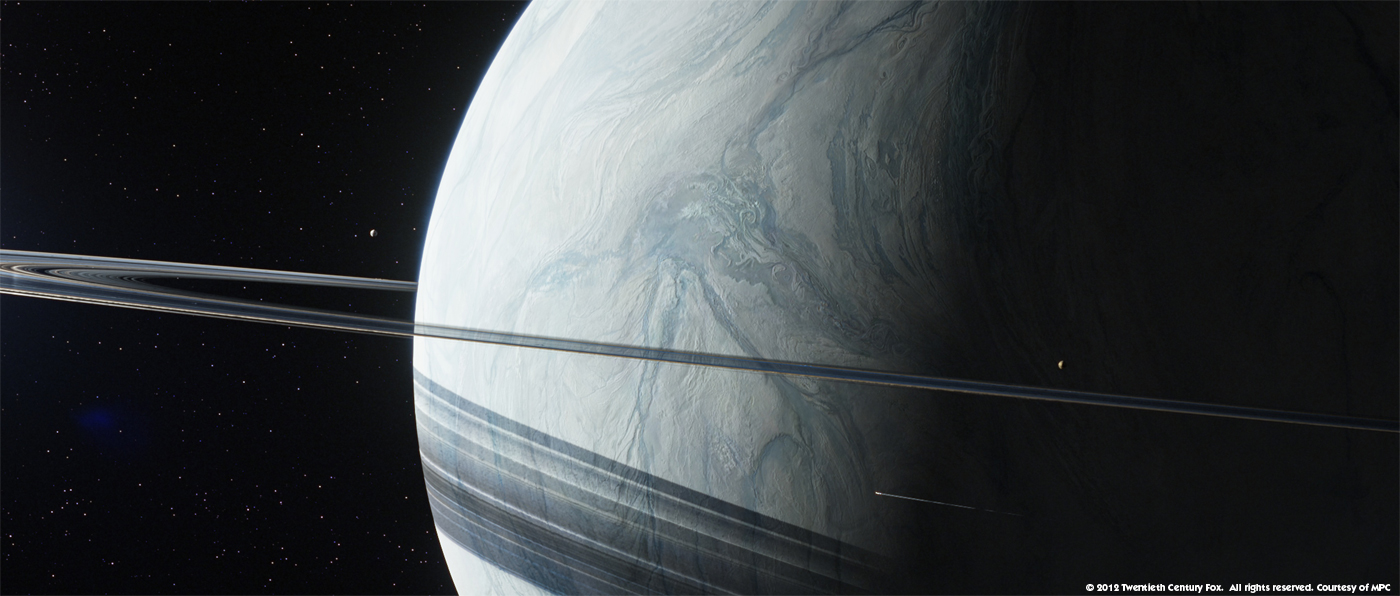
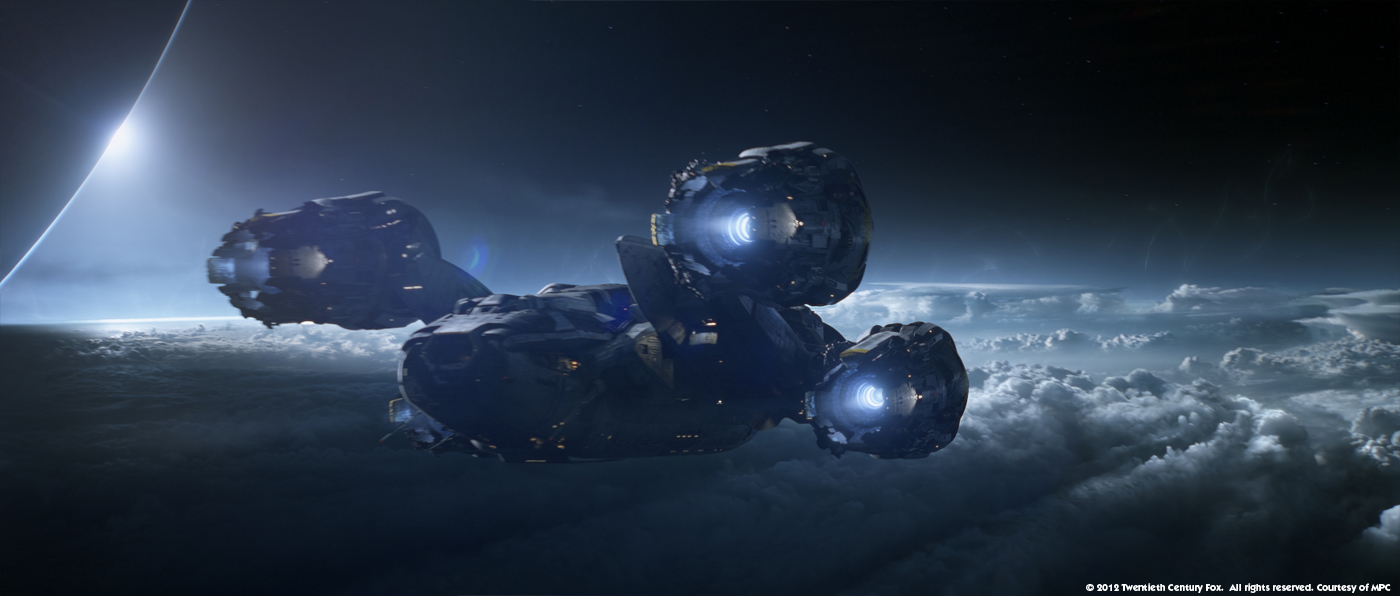
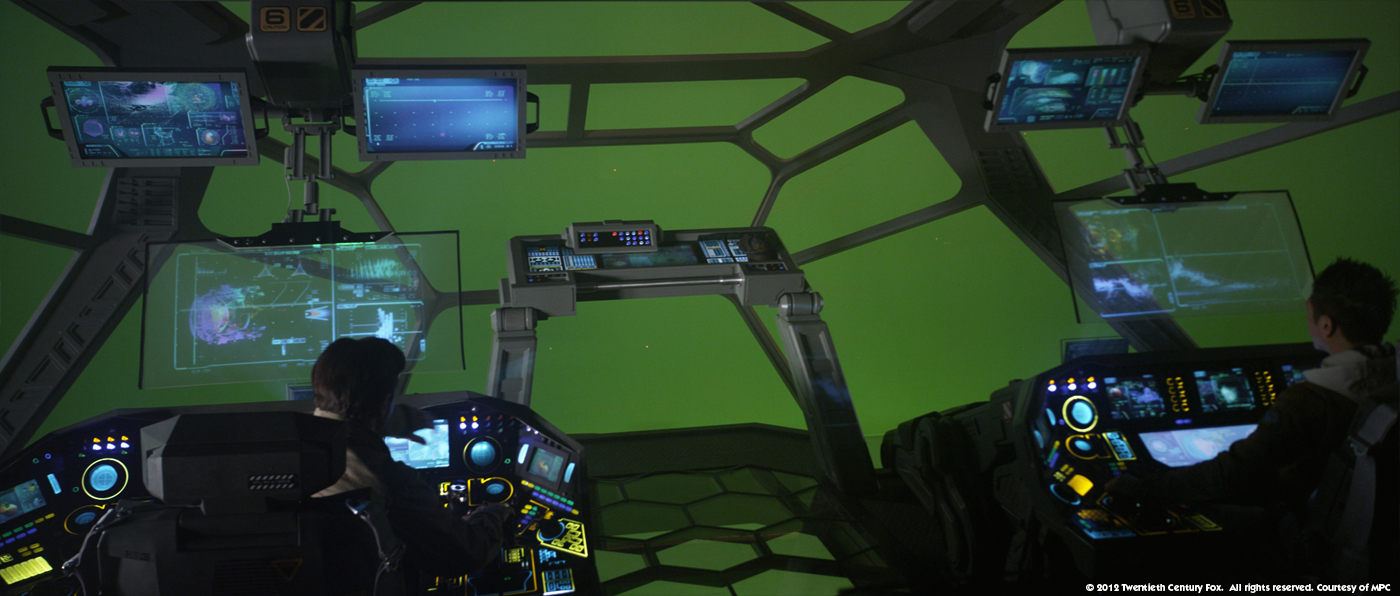
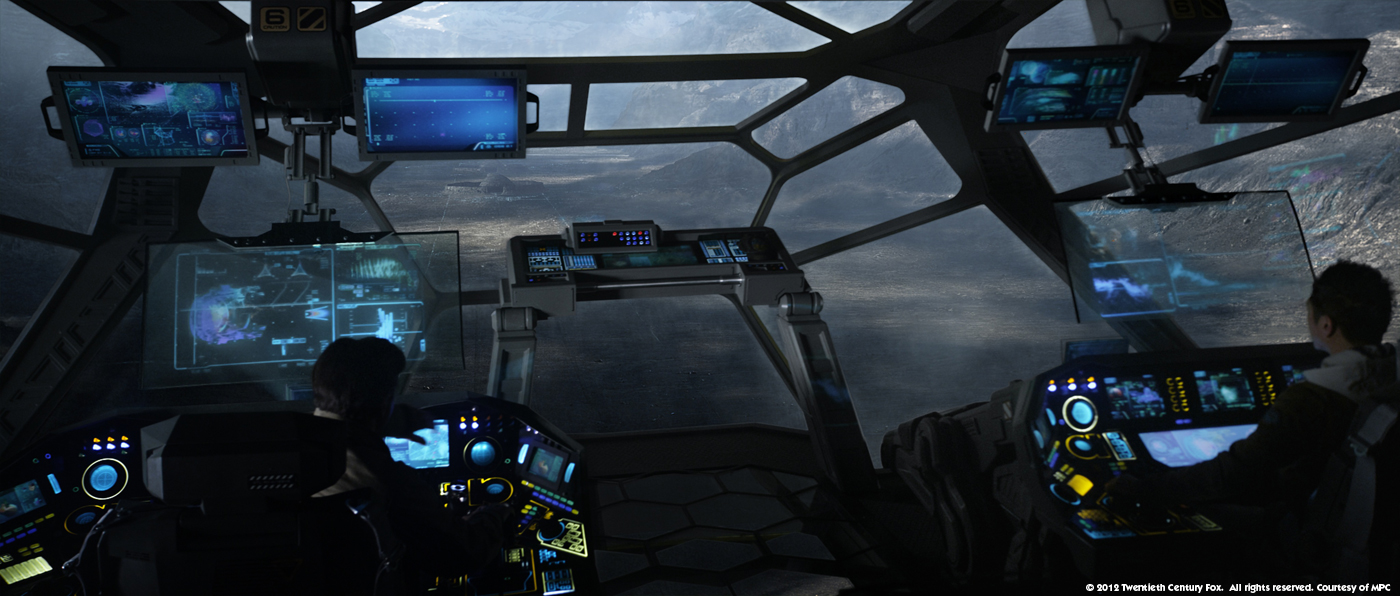
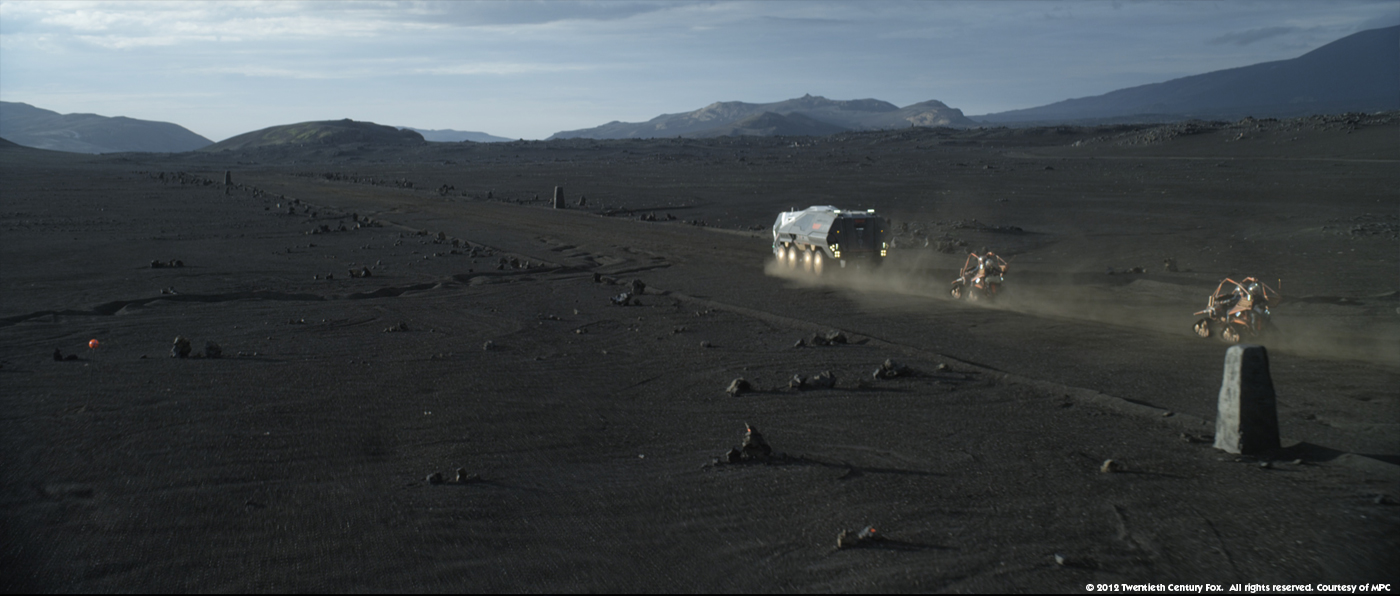
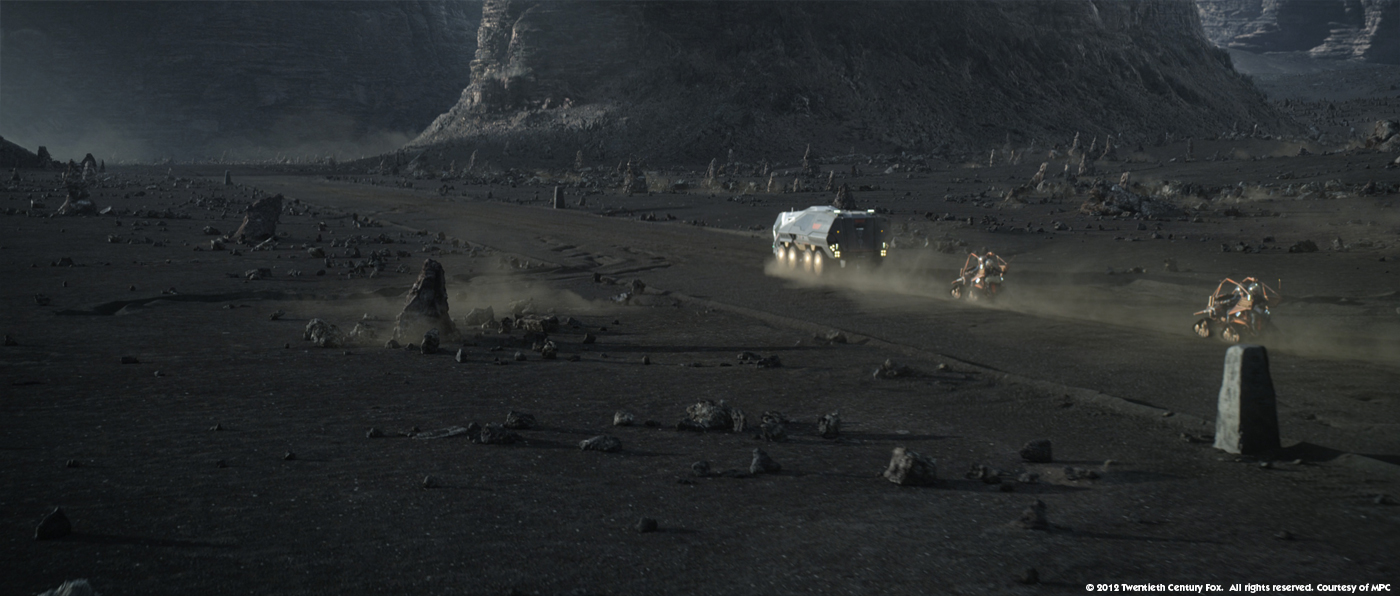
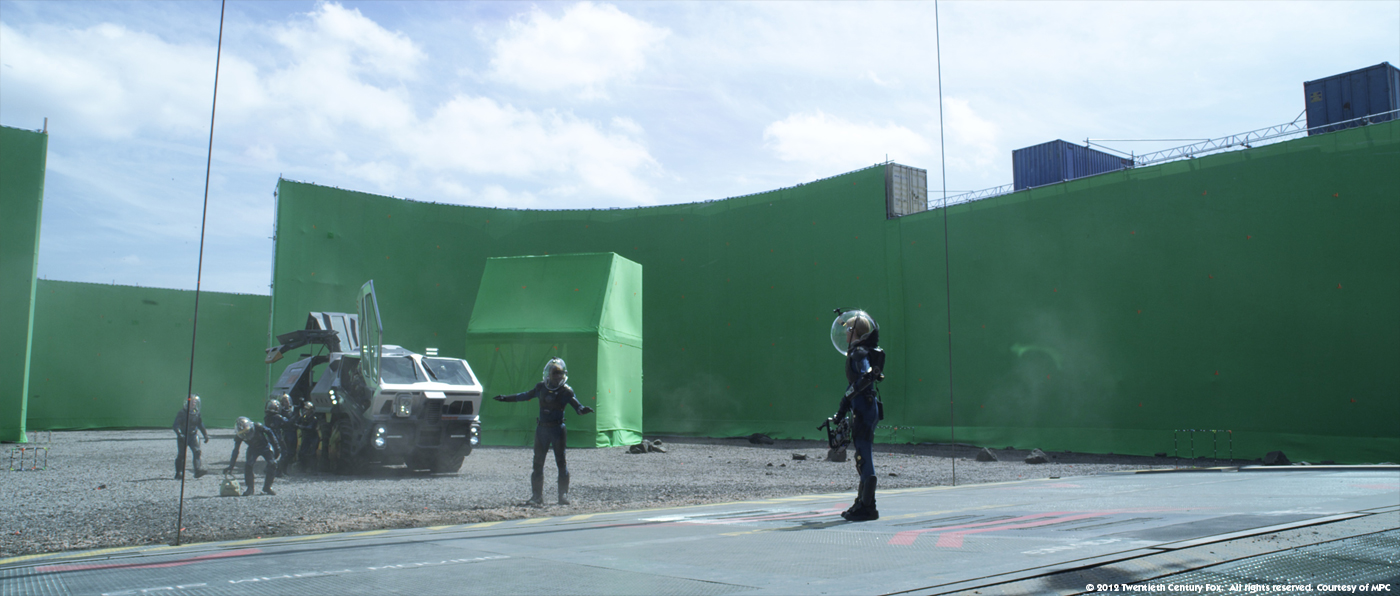
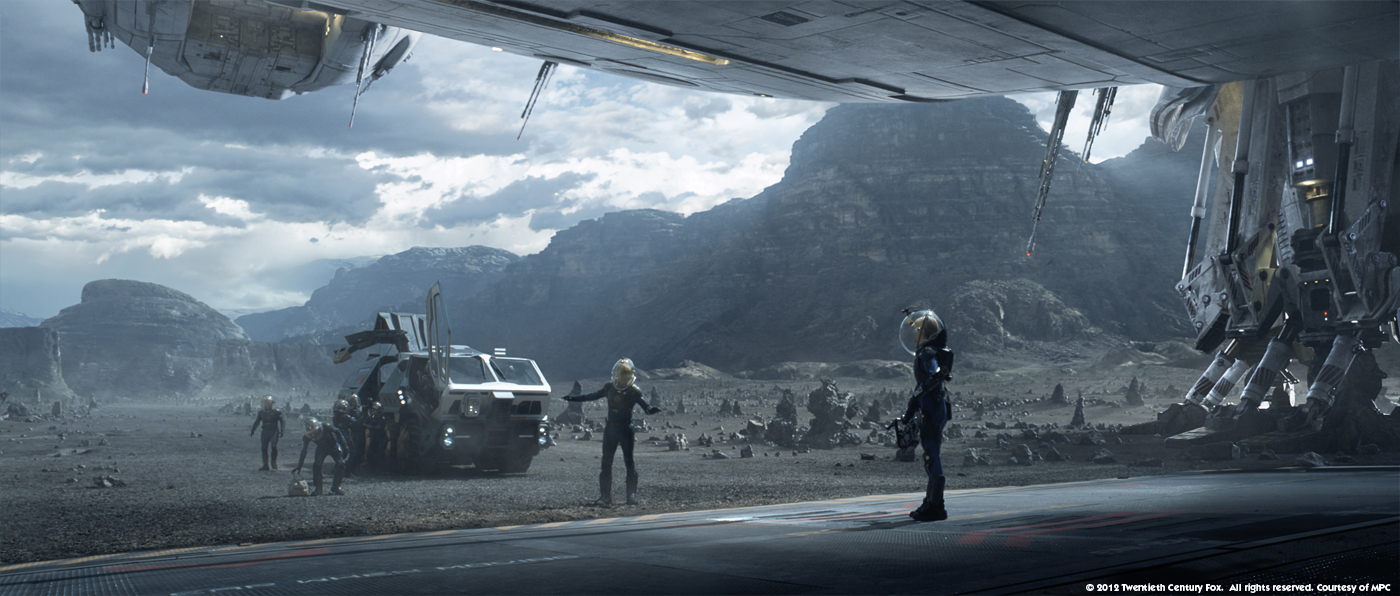
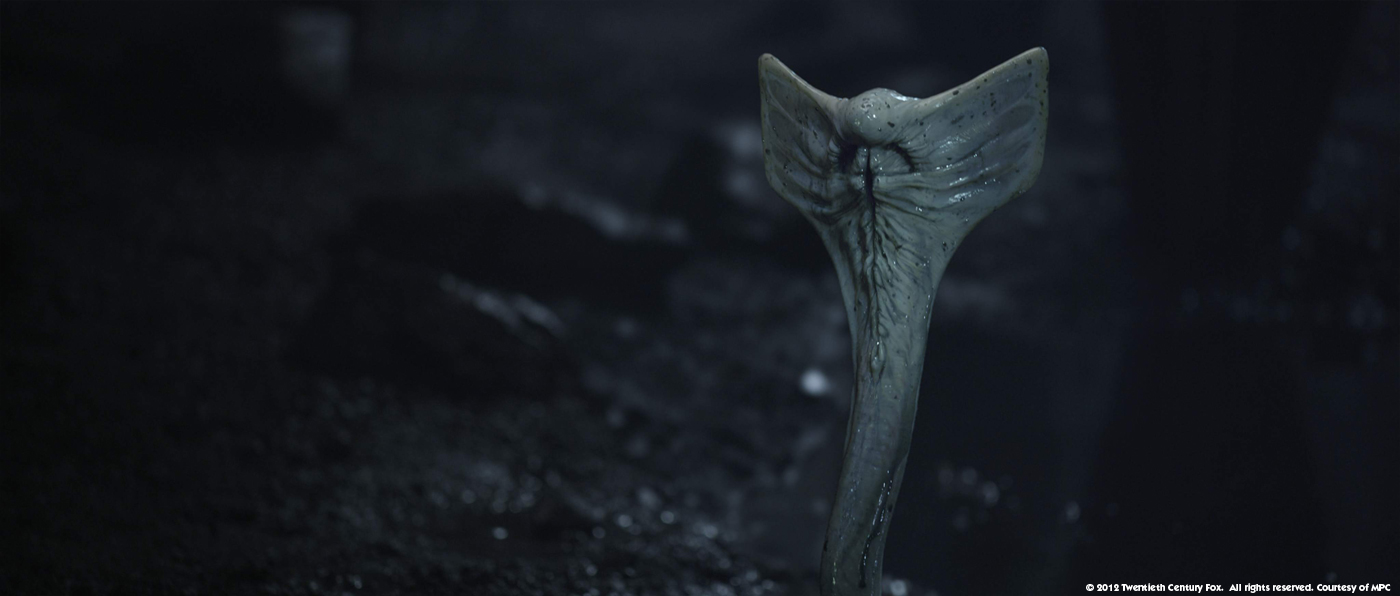
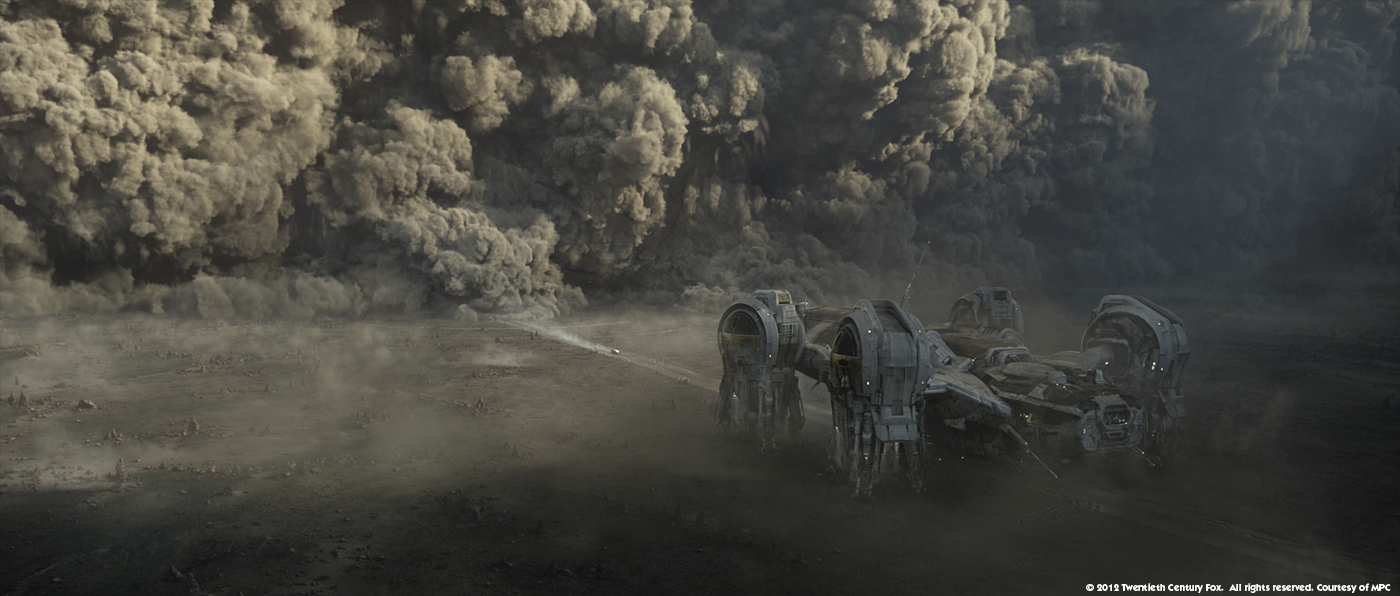
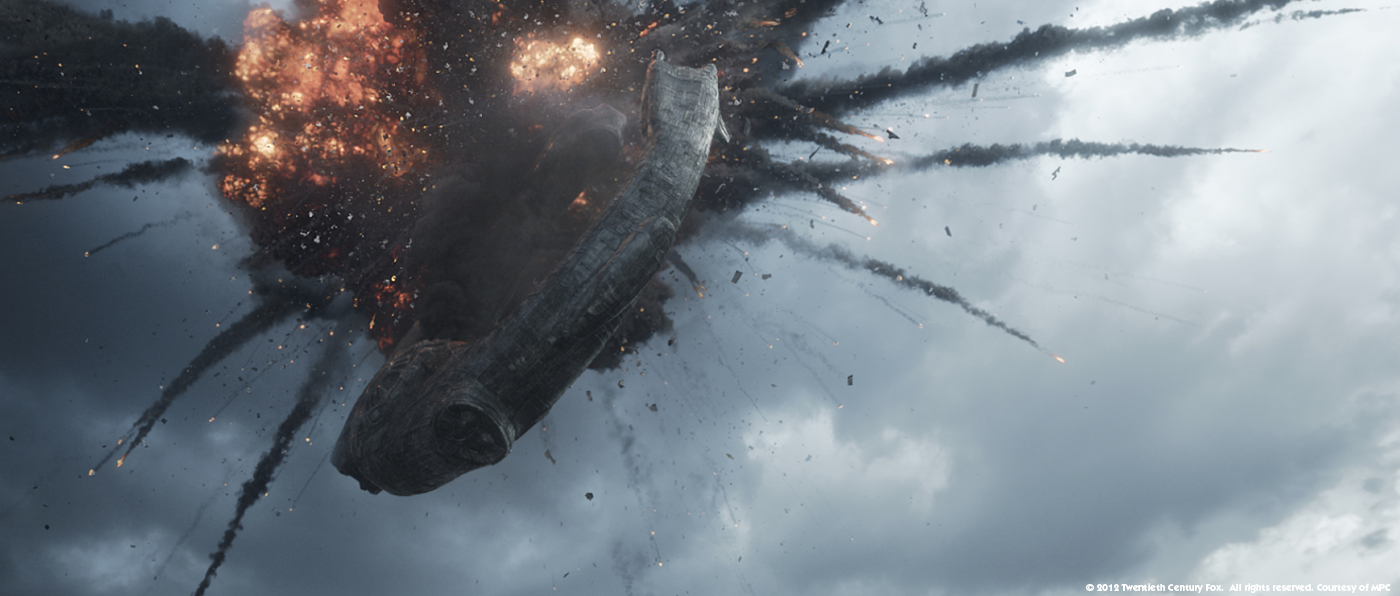
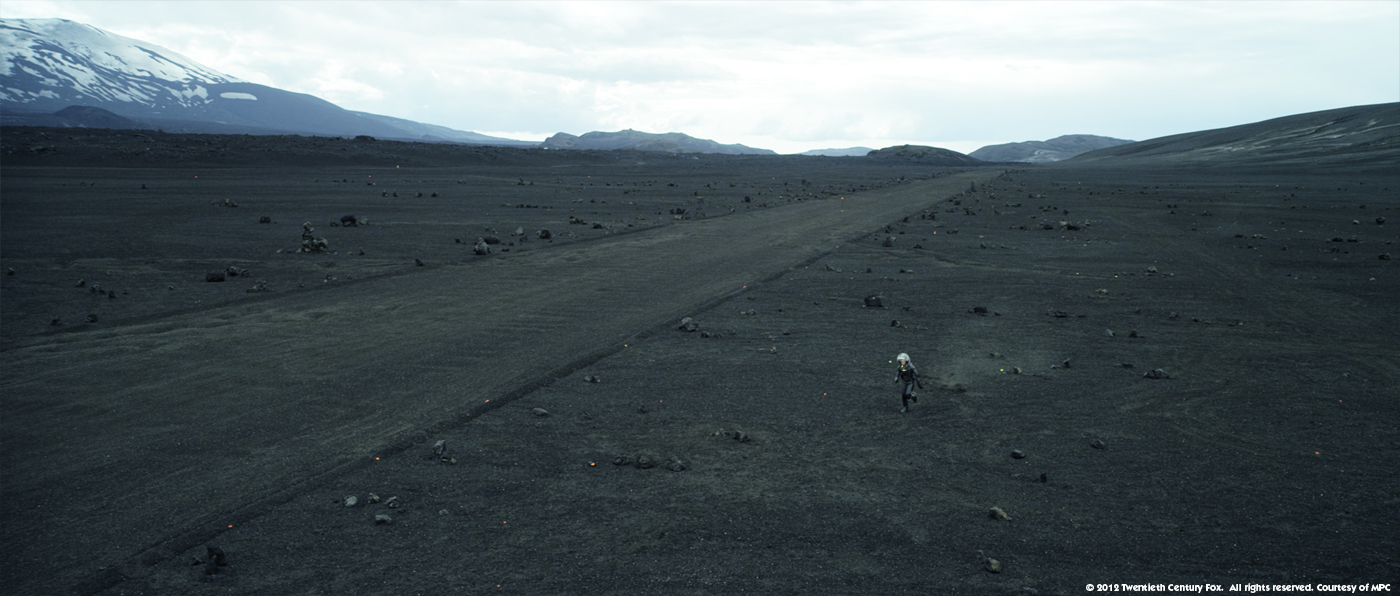
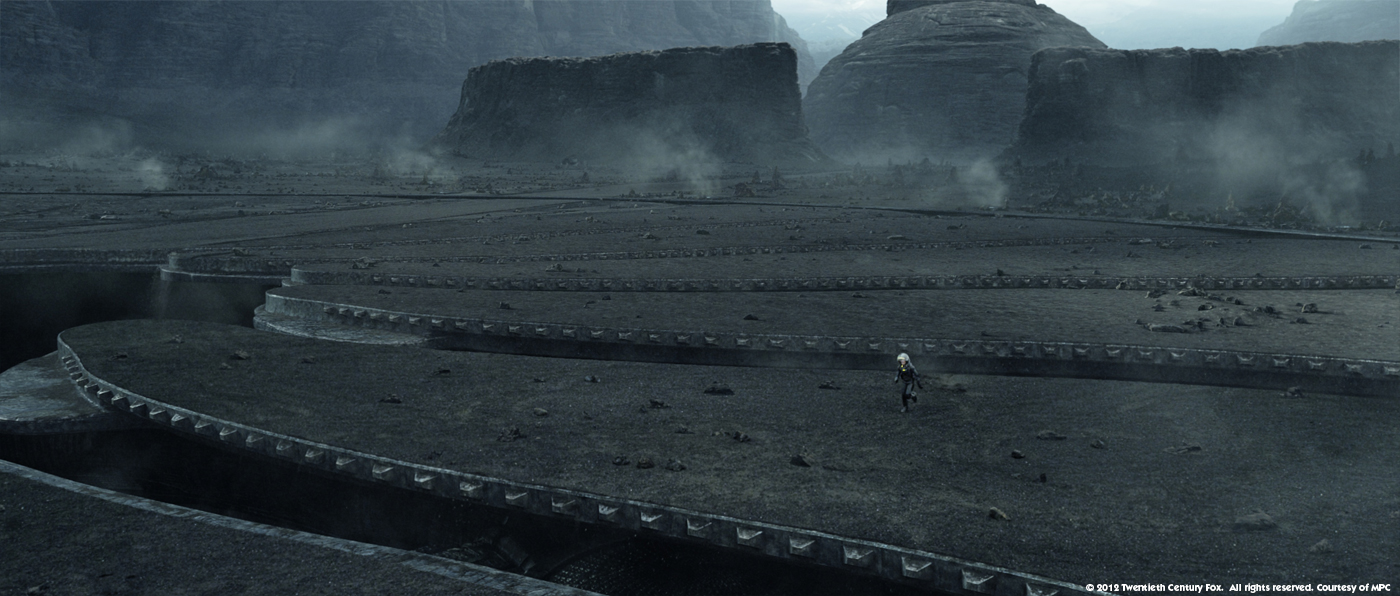
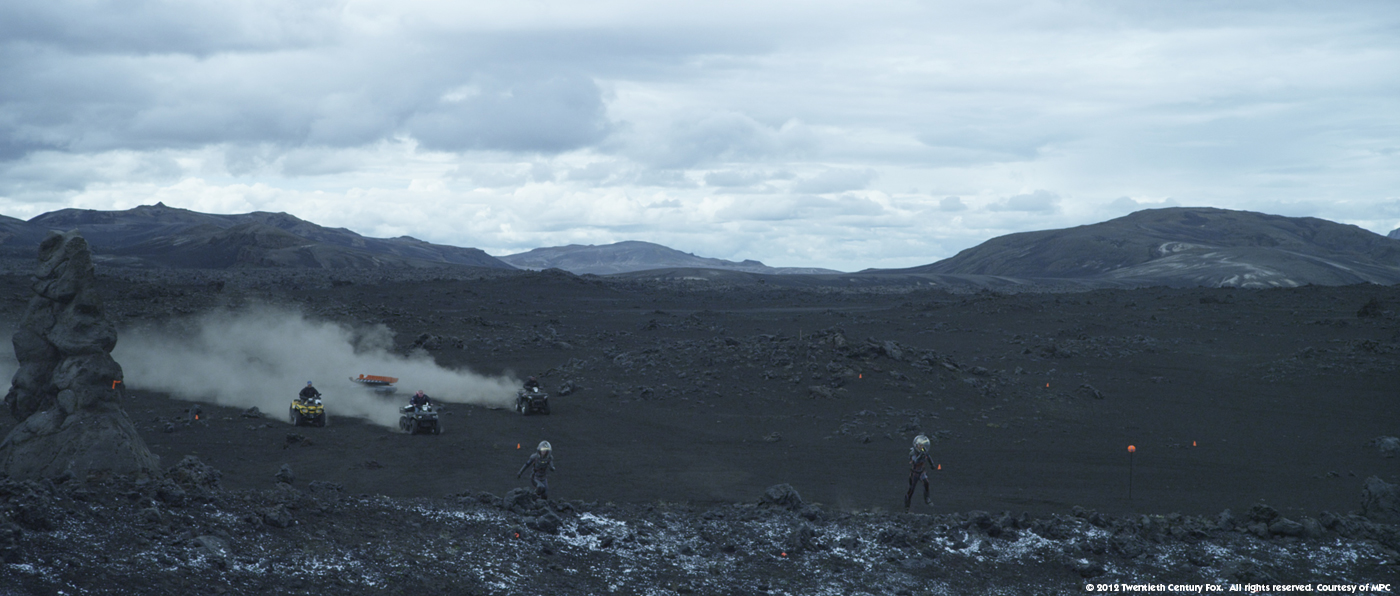
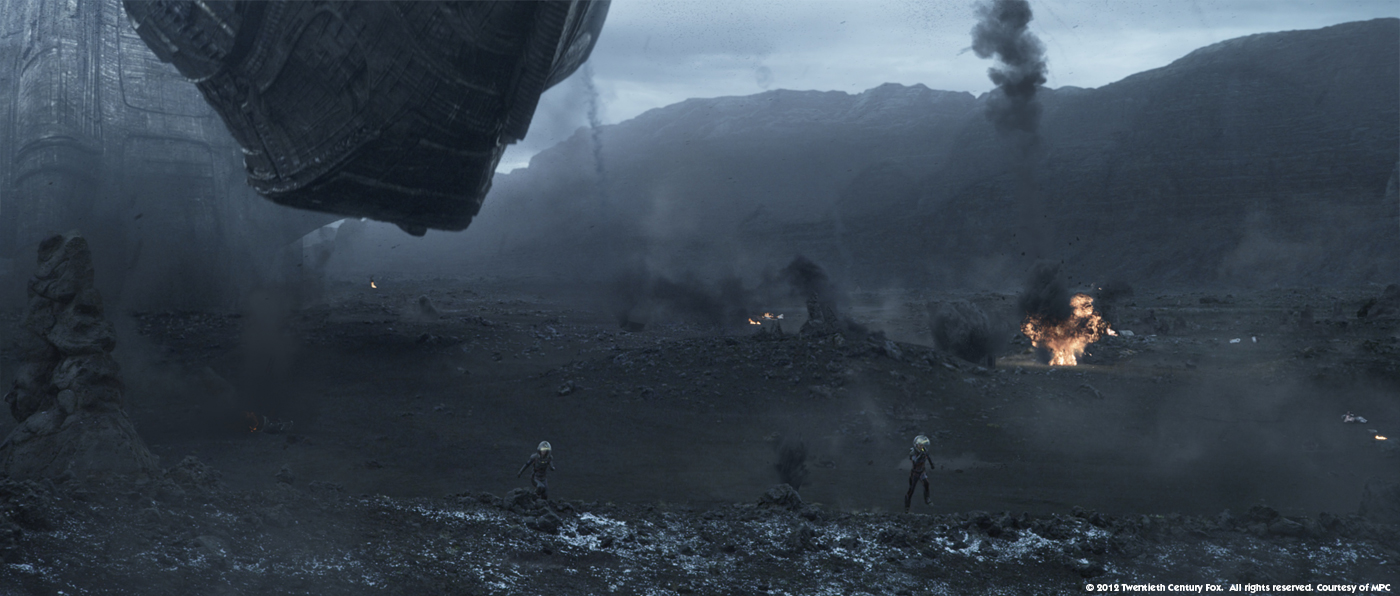




Enchiladas? I laughed and laughed and laughed (hard to stop). Thanks to Mr. Frei (the prime suspect) or Mr. Henley (highly unlikely) I found out Saturn has a moon that was most likely named by a famished Mexican astronomer. Wow. Irreplaceable.